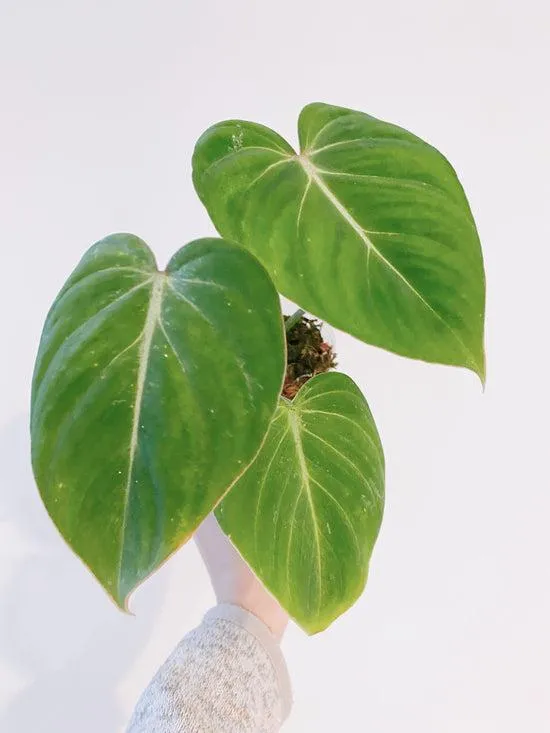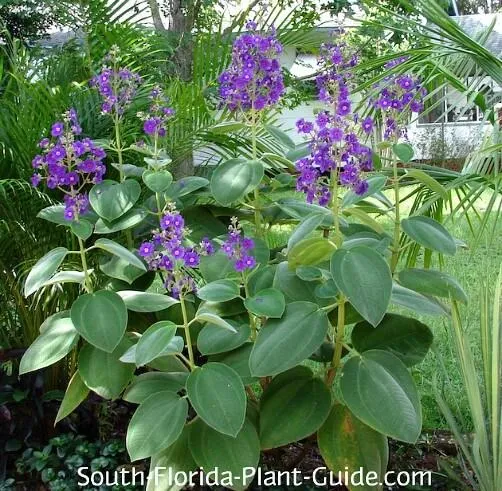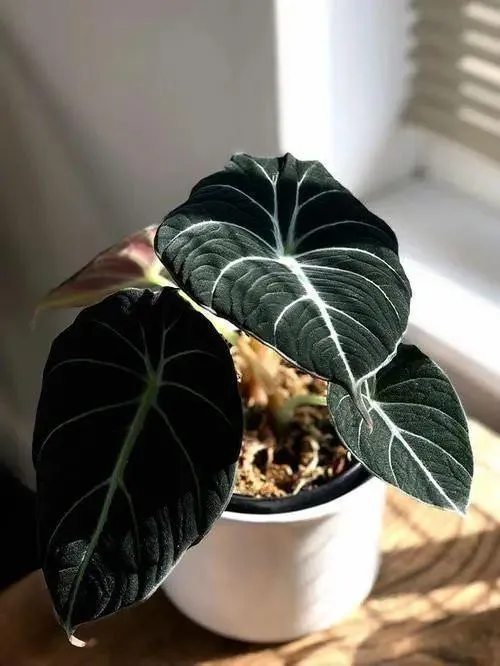Velvety Leaves: A Guide to the Plants with the Softest Foliage
Have you ever touched a leaf so soft it felt like velvet? From my experience gardening over the years, the texture of plant leaves never ceases to amaze me. There are so many varieties with uniquely fuzzy or downy surfaces that just beg to be petted. If you’re looking to add some tactile appeal to your indoor or outdoor spaces, consider these top selections for velvety leaf plants.
Peperomia
- Peperomia leaves: These plants are like little works of textile art. Some varieties have leaves coated in a silvery fuzz, while others showcase vivid shades of pink, purple or green beneath their plush coats. Peperomia are perfect for brightening dull corners or adding a touch of whimsy to your coffee table.
- Care: Moderate indirect light. Keep the soil lightly moist. Propagate by stem or leaf cuttings for an ever-expanding collection. Kind of a fun hobby if you’re into plant nerdery like me.
- Varieties to try: Peperomia hispida has graphite colored foliage so soft you’ll want to rub it on your cheek. P. caperata ‘Limelight’ looks good enough to eat with its fuzzy lime green foliage. A real stunner!
Coleus
Coleus leaves come in nearly every color under the rainbow, and some cultivars like ‘Versa Dark Shadow’ have an added velvety sheen. Coleus thrive in indirect light and make excellent tabletop plants. Their upright habit is basically perfect for showing off those drool-worthy leaves. As a bonus, they’re basically impossible to kill even if you forget to water them sometimes. Real survivor plants.
Polka dot plant (Hypoestes phyllostachya)
This one’s fuzzy leaves practically beg to be caressed. Polka dot plants got their name thanks to the adorable pale spots speckling their plush emerald foliage. As if that wasn’t cute enough, they also produce tiny lavender flowers. From my experience, these beauties prefer bright shade. Sort of like a sunroom or enclosed porch. Give them consistently moist soil and they’ll reward you with tons of new growth.
Heartleaf philodendron (Philodendron hederaceum)
Philodendron are classic houseplants for a reason – they’re basically indestructible as long as you don’t go out of your way to kill them. Heartleaf philodendron have an extra special texture thanks to their velvety emerald leaves. As a bonus, their vines can be trained up a moss pole sort of like a climbing garden. It gives the illusion of a miniature jungle right in your living room. A stunning and low-effort centerpiece for any space!
African violet (Saintpaulia ionantha)
Shaped like tiny roses, African violet leaves feel impossibly soft. No plant evokes the romance of velvet quite like these beauties. Their delicate fuzzy foliage is topped with colorful blooms in shades like fuchsia, lavender, purple or white. African violets prefer even moisture and dappled indoor light. Putting them on a pebble tray can kind of imitate their native environment and keep humidity cozy for these divas. Totally worth the extra care.

Velvet plant (Gynura aurantiaca)
Have you ever felt a plant leaf so plush it reminded you of shag carpet? That’s the vibe of velvet plants. Their deep green oval leaves look like someone gave them all an extra fluffy makeup brush. Very tactile. These beauties thrive in medium indoor light and will cascade over the sides of any pot if given space to trail. A truly unique foliage element for any home. Mix it up even more with variegated types for alternating patches of cream.
While browsing plant shops, it’s easy to want to bring home every velvety variety. Here’s where I have to tap the brakes on my plant addiction – my home simply doesn’t have room for more. But I find solace knowing pals at the local garden center are still giving those fuzzy beauties plenty of love. It’s enough to make a gal think twice about moving to a bigger place, you know?
At the same time, these soft leaf collections deserve extra TLC compared to stiffer broadleafs. Fuzzy surfaces attract more dust, soils can dry faster and problems spread easier if not addressed promptly. Here are some tips to keep your velvet crop thriving:
Dust regularly: Wipe down with a soft cloth weekly to maintain that plush texture.
Check moisture levels daily: Velvet plants are porous and lose water readily. Stick your finger in the soil and water when the top inch feels dry.

Rotate positions weekly: Maintain an even growth habit and prevent bald spots from forming where light is strongest.
Snip off damaged areas: Prune off mushy or yellowing sections to prevent rot or infestations. Fuzz can act as an artificial environment for pests.
Consider a humidifier: For finicky species like African violets, extra humidity will make them sing. A warm mist humidifier is an easy boost.
With a bit of extra TLC, your collection of plush plants will live up to their soft reputation for years. There’s truly nothing comparable to that blissful tactile appeal of velvety foliage. Now go and smoosh a leaf – you know you want to!
Key Facts About Velvety Leaf Plants
| Plant | Light Needs | Water Needs | Bloom Time |
|---|---|---|---|
| Peperomia | Partial Shade | Allow Soil to Dry Between Waterings | Non-Blooming |
| Pilea peperomioides | Bright Indirect Light | Water When Top inch of Soil is Dry | Non-Blooming |
| Coleus | Partial Sun to Shade | Keep Soil Moist | Summer to Fall |
| Petra Croton | Bright Indirect Light | Let Top inch of Soil Dry Before Watering | Non-Blooming |
| Polka Dot Plant | Bright Indirect Light | Water When Top Inch of Soil is Dry | Spring to Summer |
FAQ
-
What kinds of plants have velvety leaves?
There are several plant varieties that basically have fuzzy or downy leaves. Some common ones are coleus, African violets, and fuzzy Wuzzy peach. The leaves on these plants have a soft texture that feels kinda like velvet.

-
Why do some plants evolve to have velvety leaves?
Scientists think the velvety surface helps protect the plant. The fuzziness possibly shields the leaves from too much sun exposure. It may also deter bugs and other critters from nibbling on the leaves. So in a way, the “velvet” acts as a defense mechanism for the plant. At the same time, it allows the plant to put less energy into making tough leaves.
-
How should you care for velvet-leaved houseplants?
Velvet plants need gentle care. Keep the soil lightly moist by watering when it starts to dry. Place in bright, indirect sunlight rather than direct sun, which could scorch the fuzzy leaves. Wipe dust off the leaves with a damp cloth every so often. Prune off any dead or diseased parts. Feed monthly in the growing season with a dilute balanced plant food.
-
What are some fun facts about plants with soft leaves?
One neat thing is that scientists are amazed at how velvety plant leaves can be drying yet water resistant. Apparently the unique structure of the tiny hairs repels water much like the coating on a raincoat. Maybe plant nerds should study these plants further for biotech purposes! Velvet foliage is also said to have a stunning texture up close under a magnifying glass. You can see why poets compare velvet petals to nature’s finest fabric.
-
Is touching velvety leaves enjoyable or annoying?
Most people find the texture of fuzzy plant leaves to be quite pleasurable. There’s something relaxing about running your fingers over the soft hairs. However, the velvet can sometimes be irritating for people with sensitive skin. pollen from certain plants like lamb’s ear may cause itching or sneezing too. So while enjoying the unique feel, be mindful that not everybody appreciates petting plants the same way. You gotta do what feels comfortable for you.
-
Do you have any final tips for velvety plant care?
In conclusion, growing plants with fuzzy or downy leaves can be very rewarding. With simple care like watering and cleaning, they’ll keep their velvety appearance. Why not consider adding one as a low maintenance houseplant that’s kinda fun to touch too? Just be gentle handling the delicate leaves. Overall, velvet foliage plants are great for bringing unique texture into your home.

